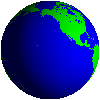
 |
The Edge of the Sea (1955) |
|
|---|---|---|
| Sea cliffs, promontories, and beaches are all landscape features of the California shore along the Palos Verdes, peninsula in Los Angeles | ||
The Book | Question | The Premise of the text | habitat | Opening lines | Chapter contents | Chapter 1 |storm risks | essay sample | Conclusion
key concepts | water | chemistry | physics of waves| tides | habitats | living creatures
![]()
Describe a selection from the first 60 pages of Rachel Carson's book, with examples and explain how that relates to her larger thesis, or one of her themes in the book.
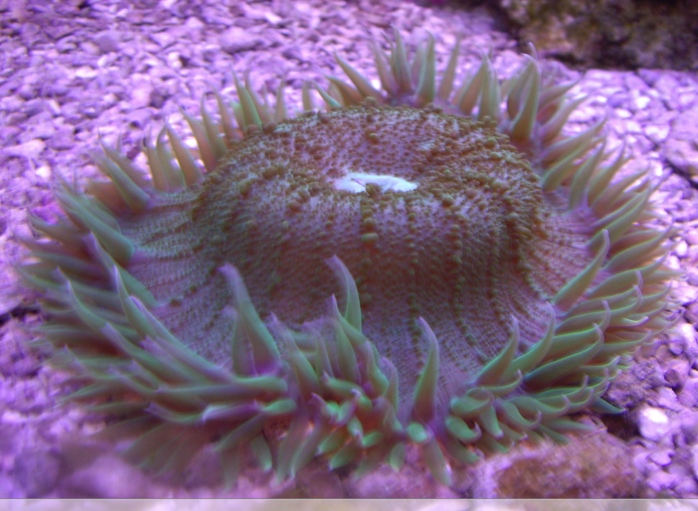 Rachel Carson's third book, The Edge
of the Sea (1955), was equally acclaimed. Carson planned to follow it with other
books about the science of ecology and the intricate relationships that govern
the natural world. Woven into the phrases of the book at every turn is the evolutionary character, descent of life, and the persistence of patterns of life based on recent findings from the geological record. As she said, "the history of life on earth is written in the rocks," because she understood that along the seashore the most recent and some of the oldest forms of earthly life huddled together for safe harbor.
Rachel Carson's third book, The Edge
of the Sea (1955), was equally acclaimed. Carson planned to follow it with other
books about the science of ecology and the intricate relationships that govern
the natural world. Woven into the phrases of the book at every turn is the evolutionary character, descent of life, and the persistence of patterns of life based on recent findings from the geological record. As she said, "the history of life on earth is written in the rocks," because she understood that along the seashore the most recent and some of the oldest forms of earthly life huddled together for safe harbor.
A tropical sea anemone feeding: one of the many ectoprocts found in the ocean.
Rachel Carson's Book looked at the Eastern Shore of the United States dividing it into six chapters focusing on three ecologically distinct areas.
Seashores are examples of the edge effect where two overlapping habitats merge so that their characteristic biotic communities or ecological communities --called a biocoenose-- overlap, thereby increasing the amount of diversity or variety of creatures able to live at the intermediate terrain of the neighboring habitats.
On page one she uses the word "Niche" as an indicator of her focus and to underscore her ecological themes.
The Book | Question | The Premise of the text | habitat | Opening lines | Chapter contents | Chapter 1 | key concepts | storm risks | essay sample | Conclusion
![]()
The Book | Question | The Premise of the text | habitat | Opening lines | Chapter contents | Chapter 1 | key concepts | storm risks | essay sample | Conclusion | related web pages
![]()
origins of life | zonation | habitats or neighborhoods | cycles | physical | biotic niche
"All through the long history of Earth it has been an area of unrest where waves have broken heavily against the land, where the tides have pressed forward over the continents, receded, and then returned."
"...the level of the sea itself is never at rest."
"Only the most hardy and adaptive can survive in a region do mutable; yet the area between the tide lines is crowded with plants and animals"
"Niches"
Carson, Edge, page, 1.
"There is a common thread that links these scenes and memories –the spectacle of life in all its varied manifestation as it appeared, evolved and sometimes died out. Underlying the beauty if the spectacle there is meaning and significance. It is the elusiveness of that meaning that haunts us, that sends us again and again into the natural world where the key to this riddle is hidden."
page, 7.
Where the forces of evolution are at work today, as they have been since the appearance of what we know as life, and there the spectacle of living creatures faced by the cosmic realities of their world is crystal clear."
Ibid.
The Book | Question | The Premise of the text | habitat | Opening lines | Chapter contents | Chapter 1 | key concepts | storm risks | essay sample | Conclusion
![]()
Fungi, monera and protists together with the more well known kingdoms of animals and plants are the major forms of life on the earth, in that they share similar means of functioning and more closely descend from ancestors with similar functional traits.
For more discussion, see Lynn Margulis, Early Life:
"For most of the history of life on this planet, the living landscape resembled Gustave Courbet's time forgotten seashore....
Although inconspicuous, life in the form of bacteria and other diverse communities changed forever the surface and the atmosphere of the planet. Although tiny, early life was complex and original. In mud flats, evaporate expanses, fens and ponds, microbes evolved innovations that we now associate with animals and plants: reproduction, predation, movement, self-defense . . . sexuality . . . . "
Lynn Margulis, Early Life
"In the discovery of the biological role played by the sea water and all it contains, we may reach an understanding of these old mysteries. For it is now clear that in the sea nothing lives to itself. The very water is altered, in its chemical nature, and in its capacity for influencing life processes by the fact that certain forms have lived within it and have passed on to it new substances capable of inducing far-reaching effects."
"So the present is linked with the past and future, and each living thing with all that surround it."
Rachel Carson, Edge, (1955) p. 37.
In my mind Rachel Carson ended on an ecological note, in that she concludes with an environmental science reminder that; nothing lives in isolation.
The Book | Question | The Premise of the text | habitat | Opening lines | Chapter contents | Chapter 1 | key concepts | storm risks | essay sample | Conclusion
distinct areas
These places with similar patterns of life are called habitats by older seashore naturalists and habitat ecologists, they are divided into zones and labelled by their dominant life forms, such as vegetation or animal residents.
Zonation | Physical features | Chemical realities | Biotic wealth
Variations in the tides create separable areas called zones along the seashore
-- the concept describing all of the features of all these different zones is called "zonation."Zonation, the division of any habitat into separate areas based on similar characteristics such as slope, exposure, drainage, elevation or observable physical similarities. In the photograph below the external influence of the tides determine the sorts of living communities along the rock bound shore.
The rocky shore reveals distinctive bands or zones of life, called the intertidal area between the lowest and highest storm tides of a coastal region.
Along the rocky shore, the bands of life due are apparent due to the seas waves, tides and currents. Here these zones are easiest to see, but hidden here, too, are secrets of adaptive and reproductive strategies common to all life.
Do see Carson pages 31 and 38 to 123.
The Book | Question | The Premise of the text | habitat | Opening lines | Chapter contents | Chapter 1 | key concepts | storm risks | essay sample | Conclusion
Carson describes a particular shore of the Mangrove habitat's intertidal zone (sub & supra tidal depending on the species); here zone being a subdivision of the substrate due to tides along this mud habitat.
"mangrove periwinkles"
"The sequence and meaning of the drift of time were quietly summarized in the existence of hundreds of small snails – the mangrove periwinkles – browsing on the branches and roots of the trees. Once their ancestors had been sea dwellers, bound to the salt waters by every tie of their life processes. Little by little over thousands and millions of years the ties had been broken, the snails had adjusted themselves to life out of water, and now today they were living many feet above the tide to which they only occasionally returned."
pp. 6-7.
More on Mangrove forests.
Zonation | Physical features | Chemical realities | Biotic wealth
- Littoral versus neritic
- benthic versus pelagic
- life zones or zones of life
- splash
- supra-tidal
- intertidal
- sublittoral
- benthic
- neritic
- pelagic
- tides, surf, waves, currents and marine climate.
- Edward Forbes, the Manx naturalist in the Aegean Sea first identified zones of creatures in the sea:
- zones of depth
- bottom or benthic dwelling versus plankton (floating) versus nekton (actively swimming) creatures.
- light spectrum
- light absorption at depth
- Littoral
Neritic
The Book | Question | The Premise of the text | habitat | Opening lines | Chapter contents | Conclusion
Chemical realities
- hyper salinity
- hypoxia
- anoxic
- eutrophication
- Pfiesteria piscicida outbreaks
- red tides
- HABs, hazardous algal blooms
Productivity and sources
- diatoms
- dinoflagellates
- mud algae
- marine grasses
- sulfur bacteria
- blue green or cyanobacteria
The Book | Question | The Premise of the text | habitat | Opening lines | Chapter contents | Chapter 1 | key concepts | storm risks | essay sample | Conclusion
Patterns of Seashore Life
habitats delineated | Beaches as visually valued | littoral drift | Beach re-nourishment | waves | storm risks | changing shores | overview
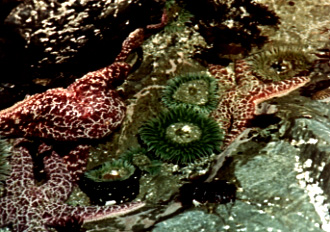
"The early history of life is written In the rocks. "
"The beauty of the reflected images and of the limpid pool itself was the poignant beauty of things that are ephemeral, existing only until the sea should return to fill the little cave."
p. 3.
"sponges, jellyfish,...hard shelled creatures."
p. 9.
Pisaster giganteus and sea anemones, two predatory species in a Pacific tide pool cluster against the retreating waters in an ebb tide. These species are examples of the radially symmetrical life forms that characterize, or indicate, a rocky shore habitat where they thrive usually in the sub-tidal zone and are exposed only during the lowest of the low tides.
The seashore areas are described by Carson with reference to the substrate of their habitat:
rocks, sand, coral, mangroves.
The impacts of water along the shore.
Habitats | Zonation | gross physical impacts | micro-physical features | Chemical realities | Biotic wealth
Habitats characteristic of seashore geography.
The Book | Question | The Premise of the text | habitat | Opening lines | Chapter contents | Chapter 1 | key concepts | storm risks | essay sample | Conclusion
The broad types of conditions based on water and landscape features are the system Carson uses to divide the book into chapters:
Rocky Shores or rock bound coasts
The Book | Question | The Premise of the text | habitat | Opening lines | Chapter contents | maps | storm risks | Conclusion
![]()
Features of a habitat in Carson's, The Edge of the Sea
What is there? Air, water and land.
Radiation and water are shapers of the physical conditions
Radiation varies in frequency and wavelength.
The ultra-violet part, called UV, of the "near-to" visible spectrum is ionizing radiation because of the energy of the waves ability to remove electrons from their atomic shells. What this means for water – sea water or fresh water – is that the compound that is water, H2 O is also ionized when exposed to sunlight for long periods of time. The compound is split (ionized) into and OH (hydroxyl radical) and an H or hydrogen ion.
Acid versus alkaline (base) measures
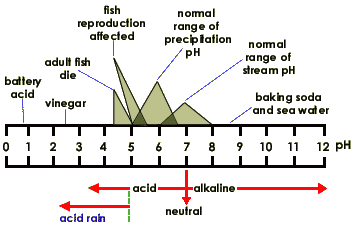
The measure of the mass of hydrogen ions in a solution is called by chemists the pH.
Most people know that as the acidity or the alkalinity of the substance, in this case a body of water can have a range of pH depending on the acidity or alkalinity of the water body.
Water as a compound or molecules of H, hydrogen and O, oxygen atoms:

When subjected to high frequency radiation water molecules will disassociate forming hydrogen ions and hydroxyl radicals which form due to the break-up of the atoms.
Water as waves
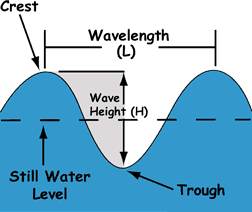
Water waves are very different from radiation waves in the power they transmit or the force they initiate from one place to another, but we measure them in the same way and speak of the wave's properties in the same terms.
What are the affects of moving water along the shore?
Geology and geography also define the conditions of any neighborhood, and the neighborhoods where different forms life congregate are called habitats that are further subdivided in to zones, or specific areas determined by external factors, such as radiation, or waves, running water, volcanoes, or submergence.
Sulfur is an in gredient in sulfuric acid:
Compare these mas above to Carson's map on page 20, how do they differ?
“The habitat approach to Natural History and relation to places.”
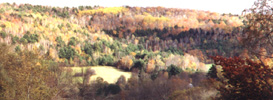
Above is pictured a forest habitat surrounding a grassy meadow.
Carson identifies many habitats but divides her focus into three primary coastal habitat types.
What is a habitat? A biotope perhaps? That term meaning the conditions of a place where there is life.
All habitats have length, width and height or depth as three dimensions of space.
A habitat is the word used by ecologists to identify a perceptibly coherent location, but may refer to the locality and vicinity, or area and range of a species; this may include the terrain, or geographical and topographical contours, that comprise the geographical and geological features of any particular surface or near surface area of a planet such as the Earth or the oceans.
Along the seashore a variety of habitats coexist, depending on the substrate forming a variety of communities living in habitats such as beaches, rocks, forests, reefs, walls, shelves, or grass beds.
Habitats may be subdivided into clearly recognizable zones.
A physical space characterized by several physiographic, chemical, and radiation dependent conditions.
The place, the surrounding terrains or material situation that is not alive, or living.
‹€€€›
habitats delineated | Beaches as visually valued | littoral drift | Beach re-nourishment | waves | changing shores | storm risks | overview
The Book | Question | The Premise of the text | habitat | Opening lines | Chapter contents | Chapter 1 | key concepts | storm risks | essay sample | Conclusion
![]()
Verbal and Wiki posting assignments
Create verbal reports every month on the creatures associated with food webs, or what feeds on what in coastal habitats. Be sure to think about and express how these creatures make a "hardy and adaptable" adjustment to the shifting conditions of their native habitat by living in a place the author describes as "a difficult world."
For example see the following essay
![]()
Sample essay on Carson's Edge of the Sea
Ian McHarg and protecting coastal values,
habitats delineated | Beaches as visually valued | littoral drift | Beach re-nourishment | waves | storm risks | changing shores | overview
The Book | Question | The Premise of the text | habitat | Opening lines | Chapter contents | Conclusions
![]()